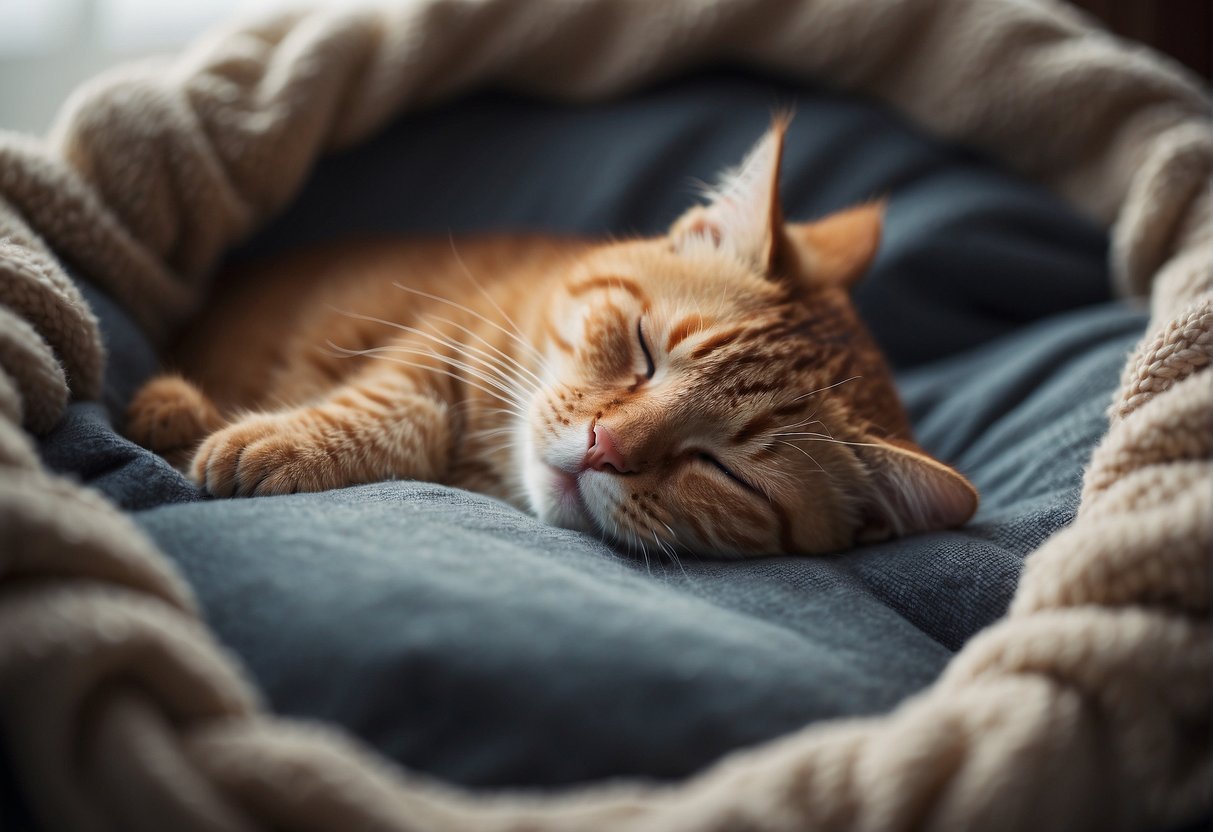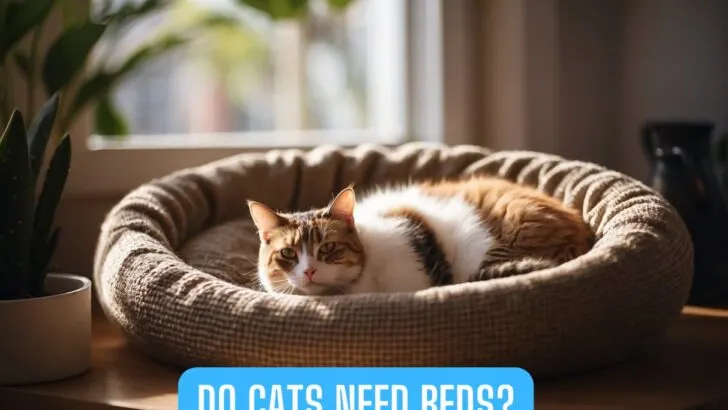Cats do not explicitly need a bed in the same way they need food and water, but they certainly benefit from having one. Picture your feline friend snuggling into a cozy spot that is just theirs – it’s a luxury they’re bound to appreciate.
Cats are creatures of comfort, and while they can and will sleep almost anywhere, from a sunny windowsill to an empty cardboard box, the soft, secure boundaries of a bed can offer them a dedicated haven for rest.

Having a bed for your cat can also provide them with a feeling of safety and territorial ownership, which can be particularly important in multi-pet households. Beds also help to keep cat hair in one place, making it a little easier to manage your home’s cleanliness, especially if your kitty is one to shed.
It’s also a question of your cat’s comfort as they age. Just like us, as cats get older, they can experience joint pain or arthritis. A supportive bed is akin to us picking out that perfect mattress – it can make all the difference for their quality of rest and overall joint health.
So while your cat might not strictly need a bed, providing one is a thoughtful gesture that can enhance their well-being and potentially your own!
How Beds Impact A Cats Sleep Behavior

When you’re getting to know your feline friend, recognizing their need for sleep is essential to ensure their well-being and happiness. Let’s explore how much rest they really need, where they prefer to slumber, and the patterns they typically follow.
Importance of Sleep
Cats require a substantial amount of sleep, usually 12-16 hours daily. This is not a sign of laziness but an instinctual habit from their ancestors who conserved energy for hunting. For senior cats, rest is even more critical as they tend to sleep longer. As a pet parent, appreciating this aspect of their natural behavior is important for their overall health.
Common Napping Locations
Cats are not particularly fussy about their sleeping spots—they’re known for their ability to nap almost anywhere. Common locations include:
- Your bed: It’s warm and comfortable.
- A window sill: It allows them to bask in the sun while staying vigilant.
- Cat trees: Elevated spots can make them feel secure.
- Quiet corners: Anywhere they find peace and quiet.
Providing a dedicated cat bed can enhance their sense of security, though it’s not uncommon to find them napping in a variety of improvised places around your home.
Sleep Preferences and Patterns
Cats have diverse sleeping preferences, and these can vary by breed or individual personality. Some prefer enclosed spaces for a sense of security, while others may seek out the highest point in a room for a restful retreat.
Cats are also crepuscular, meaning they are most active during twilight hours, and their sleep patterns will reflect this. They often engage in short bursts of intense activity followed by restful napping, which helps them maintain their natural instincts and provides regular exercise.
Choosing the Right Cat Bed
Selecting the perfect cat bed is as much about understanding your cat’s needs as it is about the available choices. Consider size and comfort, the materials used, and the various styles of beds to ensure a good match for your feline friend.
Size and Comfort Considerations
When looking at size, ensure the bed is spacious enough for your cat to stretch out, but also cozy enough to make them feel secure. A general rule is to choose a bed that’s about one and a half times the length of your cat.
Memory foam beds can offer extra support and comfort, especially for older cats who might appreciate the added cushion for their joints.
Materials and Washability The best cat beds are made from materials that are both comfortable and easy to clean.
- Materials: Look for soft fabrics like fleece, which are gentle on your cat’s fur and skin. Water-resistant materials are practical for preventing accidents from spoiling the bed.
- Washability: A washable cat bed is a must, as it helps to keep your cat’s area clean and odor-free. Removable covers or beds that can be thrown in the washing machine will save you a lot of time and effort.
Types of Cat Beds
There’s a variety of beds to suit different feline personalities and preferences:
- Standard beds: Flat, mat-like beds can suit cats who like to sprawl.
- Enclosed beds: Igloos and caves offer a secure retreat for shy or anxious cats.
- Heated beds: Perfect for keeping your cat warm during colder months.
- Elevated beds: Some cats love to be perched high up and may enjoy beds that affix to windows or are on raised platforms.
While cost can vary, investing in a high-quality bed that suits your cat’s preferences ensures they’ll use it and enjoy it for a long time. Consider the materials, ease of washing, and the specific type of bed that seems to resonate well with your cat’s current habits.
Introducing Your Cat to the New Bed
Introducing a new bed to your cat can be both exciting and challenging. Your approach can significantly influence their acceptance, making the transition as stress-free as possible.
Encouraging Use with Toys and Treats
To make the bed more appealing, sprinkle a little catnip on it or place a few of your cat’s favorite toys nearby. Cats are naturally curious, and these items can pique their interest in the new bed. Treats can also be a powerful incentive. Try placing them on or near the bed to encourage exploration.
Training and Positive Reinforcement
Positive reinforcement is key in cat behavior training. When your cat uses their bed, offer praise and a treat. If they’re hesitant, gently guide them towards the bed with a toy or treats but never force them. Cats respond well to routine, so try to incorporate bed time into their daily schedule.
Dealing with Potential Resistance
Some cats may initially resist using a new bed due to anxiety or preference for their old sleeping spots. To help, place the bed in a location where your cat already likes to shed and relax.
An inviting space can reduce stress and make the new bed more enticing. If resistance persists, consider if the bed is the right fit: size, shape, and texture are all variables that can affect your cat’s comfort.

My name is James, and welcome to FAQCats!
Along with our team of cat owners, expert pet enthusiasts, and pet professionals, we aim to write engaging helpful, engaging content about cats. At FAQCats we strive to provide content that’s accurate and fun to read. Our team writes about everything related to cats; even the most complex of topics. Through extensive research and caring for our own fur-pals, we’re able to provide something cat owners worldwide will love. Have a look around, and leave us feedback anytime!

